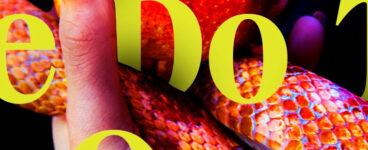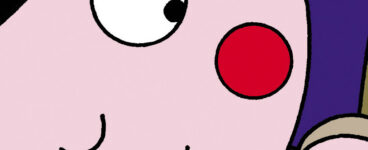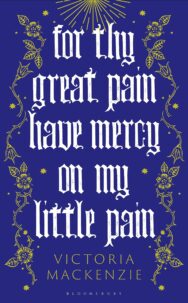‘I wanted to show the very different ways that these two women coped with their visions, and also to explore what life was like for a woman in the medieval period.’
Victoria Mackenzie’s astonishing debut novel, For Thy Great Pain Have Mercy On My Little Pain, has already been garnering praise from writers and reviewers, and it is a novel that heralds an exciting new voice here in Scotland. Here, at BooksfromScotland, Victoria tells us about some of her favourite books.
For Thy Great Pain Have Mercy On My Little Pain
By Victoria Mackenzie
Published by Bloomsbury
The book as . . . memory. What is your first memory of books and reading?
At primary school I loved a book called Flossie Teacake’s Fur Coat by Hunter Davies. When Flossie puts on her sister’s coat she is magically transformed from gawky child into a glamorous 18 year old. The book spoke to my frustrations of being a child, with no autonomy, no choice about anything, and yearning for a grown up life which I thought would be full of excitement and adventure. Ha!
The book as . . . your work. Tell us about your debut novel For Thy Great Pain Have Mercy On My Little Pain. What did you want to explore in writing this book?
For Thy Great Pain Have Mercy On My Little Pain is based on the lives of two medieval mystics, Julian of Norwich and Margery Kempe, who lived in Norfolk in the early fifteenth century. They both claimed to have visions of Christ, at a time when such claims risked accusations of heresy – and when the punishment for heresy was to be burnt at the stake.
I wanted to show the very different ways that these two women coped with their visions, and also to explore what life was like for a woman in the medieval period. Julian’s experience of being an anchoress particularly intrigued me – I wanted to imagine how it would really feel to be in a single room for so many years. What was it like physically? The cold, the boredom, the inability to stretch your legs and get fresh air. And how would it change your personality, your ideas about the world, your sense of self?
The book also explores motherhood, the impact of grief, and the very human need to be loved and accepted by others.
The book as . . . inspiration. What is your favourite book that has informed how you see yourself?
Maggie Nelson’s The Argonauts. She writes so honestly and frankly about the body, sex, parenthood, love, relationships, but her writing is also informed by her deep engagement with literary ideas. The way she brought together the bodily and the intellectual was a revelation.
The book as . . . an object. What is your favourite beautiful book?
The graphic novel The Dancing Plague by Gareth Brookes. It’s a sort of graphic novel, though it tells the true story of a dancing plague that afflicted a town in Strasbourg in 1518, when many inhabitants were seized by a demonic compulsion to dance. Brookes uses a blend of his own ‘pyrographic’ techniques and embroidery to create incredibly unusual and beautiful images. And it’s all offset with a wonderful medieval sense of humour – earthy insults and exclamations, like ‘By the balls of St Bartholomew!’
The book as . . . a relationship. What is your favourite book that bonded you to someone else?
A lot of my friendships are based on a love of books and I met two of my closest friends when we worked together in the same library. Recommending and sharing books has become part of our twenty-year conversation so it’s hard to narrow it down to a single book. Recently I recommended Leonard and Hungry Paul by Rónán Hession and that was a big success, it’s such a gentle, lovely book.
The book as . . . rebellion. What is your favourite book that felt like it revealed a secret truth to you?
There’s no single truth that a book has revealed to me about myself, but there are many books that have resonated in their approach to life and art. During lockdown I read Samantha Clark’s memoir, The Clearing, which contained many truths about family relations, art as a discipline, and the pain that can be caused when you need to carve your own path in life. It’s such a thoughtful meditation, full of clear-eyed observations – and her writing style is exquisite.
The book as . . . a destination. What is your favourite book set in a place unknown to you?
I’ve never been to Paris and would love to be a fly on the wall (or perhaps that should be a barfly) at the 1950s Paris bars and cafes in James Baldwin’s novel, Giovanni’s Room, hanging out with the artists and misfits. I’m a big fan of short books that pack a punch, and this one is just stunning.
The book as . . . the future. What are you looking forward to reading next?
I’ve recently been given The Mercies by Kiran Millwood Hargrave, which I’m really looking forward to. Like For Thy Great Pain it’s an historical novel based on a true story and explores the way society tries to constrain women and punish them for independence. Hargrave’s novel is set in Norway in 1617 and I’ve a feeling the writing will be absolutely gorgeous.
For Thy Great Pain Have Mercy On My Little Pain by Victoria Mackenzie is published by Bloomsbury, priced £14.99.
ALSO IN THIS ISSUE

 The Things We Do To Our Friends
The Things We Do To Our Friends
‘The inspiration around the book was friendship in all its glory, the negatives, and the positives.’

 Rabbie’s Rhymes: Robert Burns for Wee Folk
Rabbie’s Rhymes: Robert Burns for Wee Folk
‘How can ye chant, ye little birds And I sae weary fu o’ care!’













